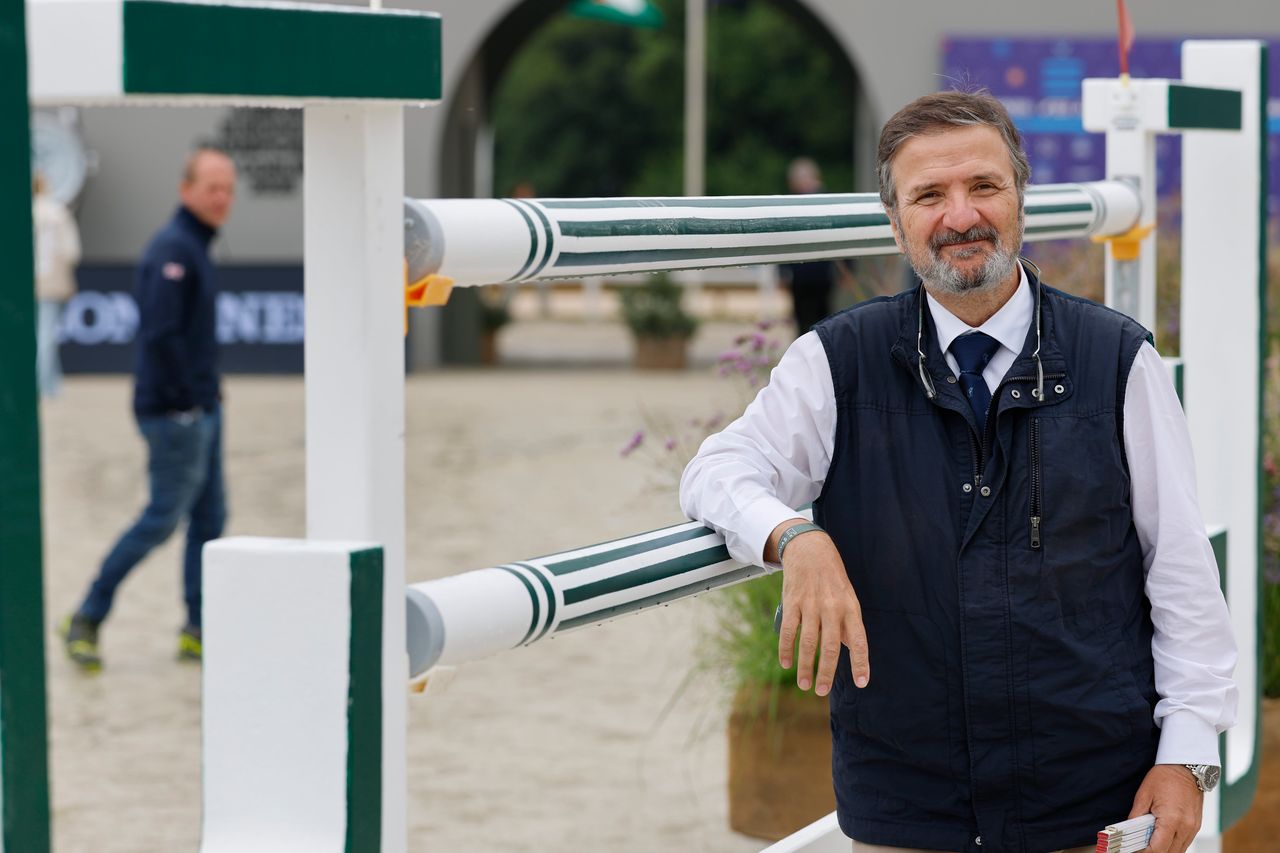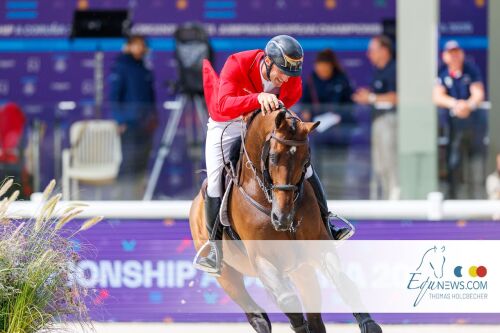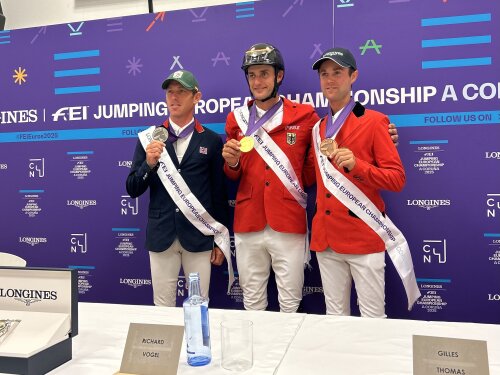This week, Europe’s top showjumpers will face courses designed by one of the world’s most respected course designers: Spaniard Santiago Varela Ullastres. He received widespread praise for his inventive courses at the Paris 2024 Olympic Games, and now takes the lead at the Longines FEI Jumping European Championship 2025, which will take place from 16 to 20 July in A Coruña, Spain. For Varela, every new course design starts with a single line. From that foundation, he builds step by step. The horse’s rhythm is always his main focus: “Everything must flow in the canter. The horse has to feel good throughout the course…”
“Each line poses its own challenge”
“Every line is a combination of obstacles with its own theme or challenge,” explains the Spaniard. “Sometimes it’s about the distance between two jumps, other times it’s a strategic turn to save precious seconds. Especially in a jump-off, speed is crucial — but the shortest path is often also the riskiest.”
Each obstacle is measured by the team down to the exact centimetre. The spacing between elements — and what comes before and after them — is critical. Even colour use plays a role, not just for the riders, but especially for how horses visually perceive the jumps.
External factors matter too: is the course indoors or outdoors? Is there natural sunlight or artificial lighting? Is rain expected? What colour is the footing, and how do the obstacles contrast against it?
“Every question you ask a horse must have at least one logical, natural answer,” says Varela. “I design primarily for the horse. It’s up to the rider to find the solution.”
Analysis is more than just numbers
After a competition, Varela looks beyond statistics like the percentage of clear rounds or retirements.
“You need to see the whole picture — not just the numbers,” he says. “Whether the show is in Europe or elsewhere, the field of competitors varies, and that affects the results.”
What matters most to him is the question: “Did the horses jump as expected?” That, according to Varela, is the true benchmark. His ultimate goal is simple: the horses must jump well.
The audience experience also plays a role: “Did the spectators enjoy great sport? Did the horse help make that possible?”
If a course ends up being easier than expected, Varela doesn’t see that as a win — quite the opposite.
“If there are surprises on the course, I’m not happy. It has to go as planned. If it doesn’t, then there’s a flaw somewhere in the design.”
Advice for the next generation of riders
What can up-and-coming riders do to finish a round without penalties? Varela shares some valuable tips:
“Walking the course once is not enough. You need to walk it at least twice. The small details make all the difference.”
“You need to not only observe what’s in front of you, but also interpret how you’ll approach it with your horse. Every combination is different.”
According to Varela, nothing in this sport is guaranteed.
“That’s exactly what makes it so beautiful — anything can happen.”
He encourages young riders to observe the routines of top-level athletes:
“They walk the course twice, hardly speak, and analyze every element from start to finish — every line, every turn, every jump. Full focus, complete confidence.”



